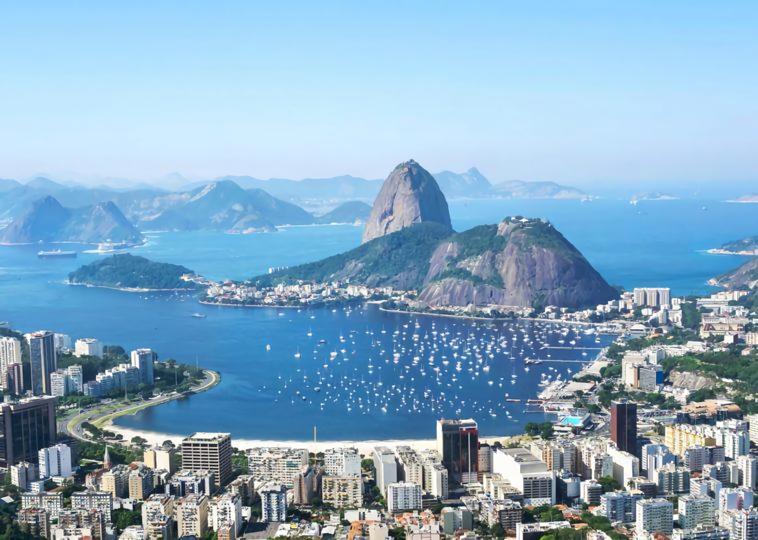7 Exceptional Famous Tourist Attractions in Brazil

Contents [hide]
Brazil is one of South America’s most influential travel destinations and makes billions in tourism annually. Long white sand beaches and the untouched wilderness of the Amazon rainforest are the main attractions in Brazil. Brazil, the largest country in South America, takes up almost half of the continent.
Almost everything is located in the southern hemisphere, and a large part is tropical, with large sections of rainforest filled with exotic plants and wildlife. Gold from Brazil’s mines still lines the churches of Portugal, the colonial power that ruled Brazil until 1822.
Amazon Rain Forest

At around 6,400 km, the Amazon is the second-longest river in the world, slightly shorter than the Nile, and the largest river by volume. Amazon has over 3,000 recognized fish species, and new species are still being discovered. The Amazon basin is covered by half of the planet’s remaining rainforests.
Although a tenth of the world’s estimated 10 million species live in the Amazon rainforest, jungle tours are more about going upriver to the humid, vibrant, oppressive atmosphere than watching animals.
Botanical Garden of Curitiba

The Curitiba Botanical Garden is located in Parana, southern Brazil. This garden was opened in 1991 and designed in the French garden style. The greenhouse, Art Nouveau style, made of metal and glass at the entrance, is the main attraction of this garden, protecting many unique types of plants.
The botanical museum in this garden has a collection of native flora and several other biological species. The sculptures, photographs, videos, and publications in the exhibition center of this garden also become a unique attraction among visitors.
Canoa Quebrada

Canoa Quebrada, known as the pearl of the east coast of Ceara, Brazil, is an international tourist beach resort 164 km from Fortaleza in Aracati. Dune buggies, horse riding, sailing, mountain biking, windsurfing, and sandboarding are the main tourist activities of this beach.
Canoa Quebrada also offers one of the most beautiful sunsets in the world. The availability of delicious seafood like shrimp, oysters, stingrays, lobsters, and crabs will also be the best part of your trip to this beach.
Fernando De Noronha

It is an archipelago in Brazil comprising 21 islands, known for beautiful beaches, landscapes, and rich wildlife. Two hundred thirty different fish species, five shark species, many flora species, and two sea turtles live in the clear waters of this island. To ensure eco-tourism statutes, only a limited number of tourists are allowed within this island during certain seasons.
Cycling or walking will be the best way to get a great view of beaches and landscapes. There are 16 beautiful islands for tourists to snorkel, dive, surf, sail, ride, dolphin, and do underwater photography, and natural tidal pools are also available within these islands.
Lencois Maranhenses National Park

This national park covers an area of 383,000 hectares with discrete white dunes. During the rainy season, most of the valley of this national park is filled with water, and tourists can see many blue and green lagoons at this time, a unique landscape.
Particular types of fish, such as tiger fish and wolfish, will arrive in these lagoons at this time and can survive in the mud. Driving in a jeep over dunes, driving a boat, and flying over the national park have become the most important tourist activity.
Iguazu Falls

Iguazu lies within the border between Brazil and Argentina. These waterfalls divide the Iguazu River into two levels, Upper and Lower Iguazu. The Iguazu Falls range in height from 197 feet to 269 feet. The Iguazu Falls are more extensive than Niagara Falls.
In the rainy season, water flows over Iguazu waterfalls at 450,000 cubic feet per second. On November 11, 2011, the Iguazu Falls became one of the seven new natural wonders in the world. Tourists can also see 2000 species of rainforest plants around Iguazu Falls.
Christ the Redeemer

Christ the Redeemer is the symbol of Brazilian Christianity, at the top of Corcovado Mountain at 23,000 feet. This statue is 98 feet tall, and its arms stretch 92 feet wide. The right arm of this statue points towards south Rio de Janeiro, and the left arm towards north Rio de Janeiro.
The Catholic community of Rio made a second proposal in 1920, and Christ the Redeemer was built between 1922 and 1931. Reinforced concrete and soapstone were used to create this statue. This statue was built in pieces, carried to the top of Corcovado Mountain, and assembled to form the sculpture.


